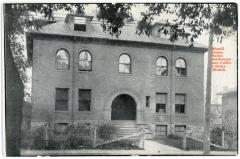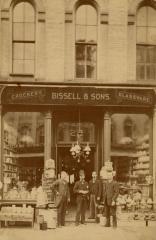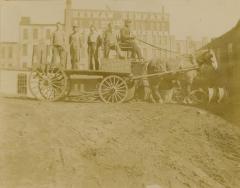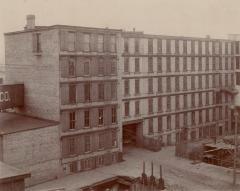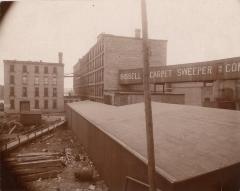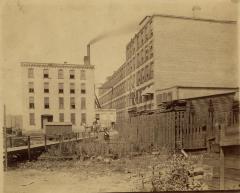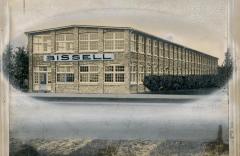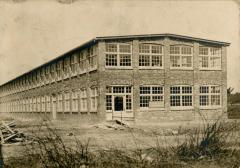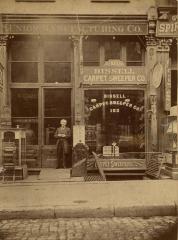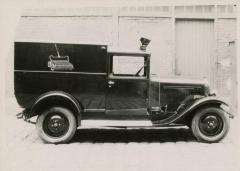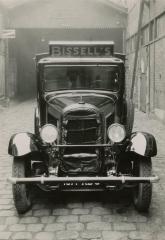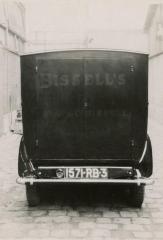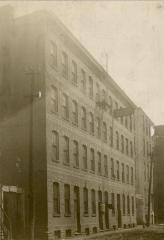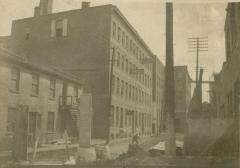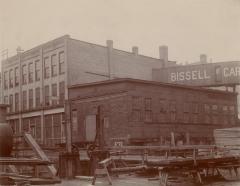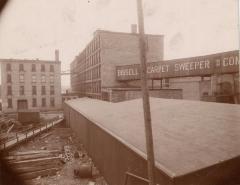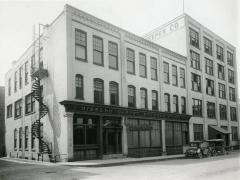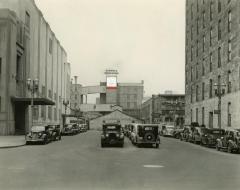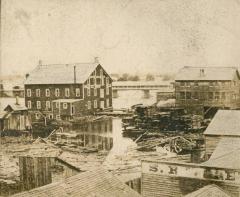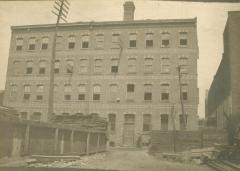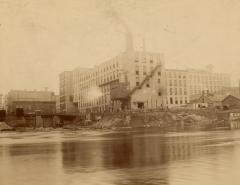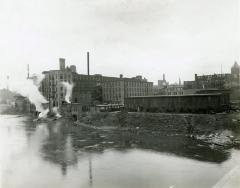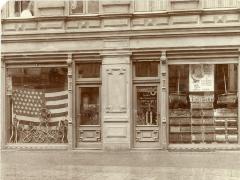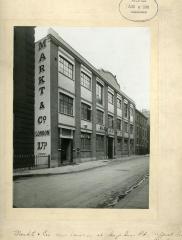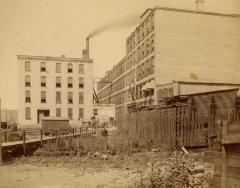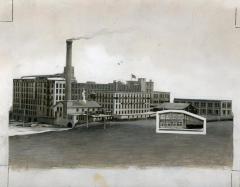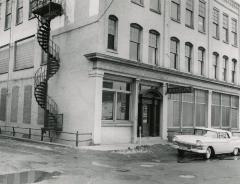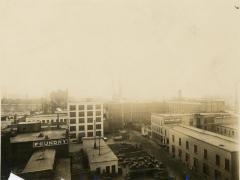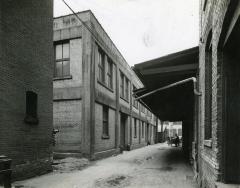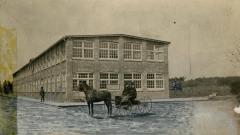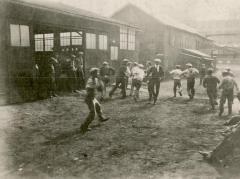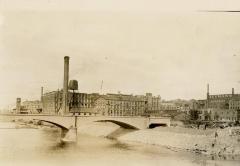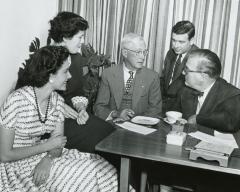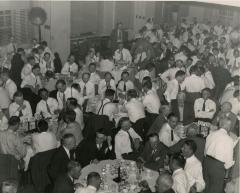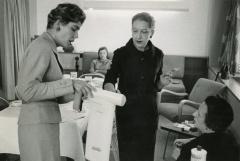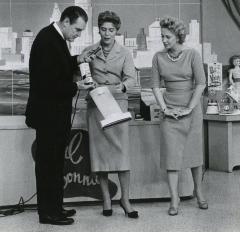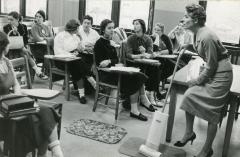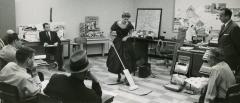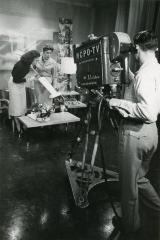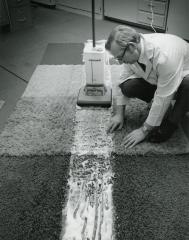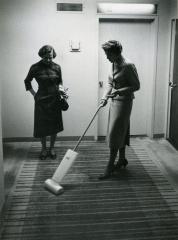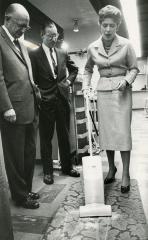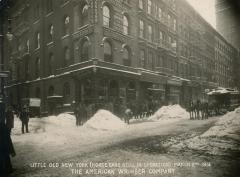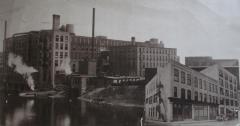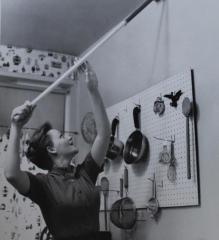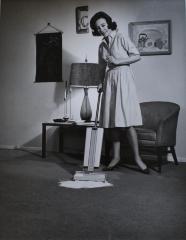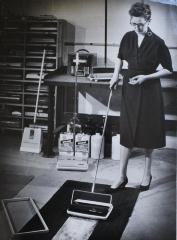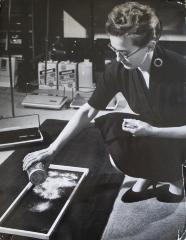Comments and Tags
Be the first to comment on this item!
Archival Collections ➔ Archival Collection #042 - Bissell Incorporated
Identifier:
1991.4.2Description:
Archival Collection #042 - Bissell Incorporated contains materials and artifacts relating to Bissell company. In 1876, Grand Rapids entrepreneur Melville Bissell designed and patented America’s first fully functional carpet sweeper - first to clean in his own shop. The invention was such a great success that Bissell opened up a factory in downtown Grand Rapids (currently where Devos Place stands). Not long after, tragically in 1889, Melville Bissell died leaving his wife Anna Bissell with the young company as well as her 3 young sons. Anna continued to maintain and grow the business as one of America’s first female CEO’s of an international company. Bissell continues to be the number one seller of floor care products in North America.The Bissell artifact collection consists of products and documentation spanning the period 1859-1960 including carpet sweepers, toy sweepers, experimental carpet sweepers, handvacs, oversize sweepers, electric vacuums. The accompanying archival collection contains product information and business records along with a lithograph of the 1926 Norman Rockwell painting, commissioned for Bissell’s 100th Anniversary in 1976.
Bissell archival collection consists of approximately thirty cubic feet of archival paper material documenting company history, products, marketing and business, including: sixty-nine scrapbooks of advertisments, three boxes of historical photographs and two boxes of patent infringement lititgation documents. See also 1991.4.1/Lithograph, Norman Rockwell-'Pals'.
A full listing of the contents of this collection can be found in the Finding Aid that is attached to the media section of this catalog entry.
Date:
1880 – 1976Materials:
Paper, PhotographsCurrent Location Status:
In StorageCollection Tier:
Tier 2Source:
Gift Of Bissell IncorporatedRelated Entities:
Bissell Inc. (creator)Alternate names: Bissell, Bissell Incorporated
Bissell Inc. was founded in 1876 by Melville Bissell in Grand Rapids, Michigan. Bissell was responsible for the invention of the carpet sweeper and built the company's first manufacturing plant in Grand Rapids in 1883. By the late 1800s, they were producing 1,000 carpet sweepers a day. When Bissell passed away in 1889, his wife Anna took over as CEO, making her the first female CEO in America. As the times changed the company began to manufacture vacuums and carpet shampoos. As of 2019, Bissell Inc. is still one of the leading companies in floor-care. Bissell Inc. (donor)
Alternate names: Bissell, Bissell Incorporated
Bissell Inc. was founded in 1876 by Melville Bissell in Grand Rapids, Michigan. Bissell was responsible for the invention of the carpet sweeper and built the company's first manufacturing plant in Grand Rapids in 1883. By the late 1800s, they were producing 1,000 carpet sweepers a day. When Bissell passed away in 1889, his wife Anna took over as CEO, making her the first female CEO in America. As the times changed the company began to manufacture vacuums and carpet shampoos. As of 2019, Bissell Inc. is still one of the leading companies in floor-care. Anna Sutherland Bissell (is related to)
The daughter of William Sutherland, Scottish sea captain, Anna Sutherland was born December 2, 1846 in River John, Pictou County, Nova Scotia. Her mother, Eleanor Putnam, was the daughter of Charles Putnam, one of the early pioneers to settle in Canada. A pioneer herself, Anna would later become a wife, mother, philanthropist, business woman, as well as the first female CEO in the country. At her death, her loss was felt at both a local and company wide level. Many mourned the loss of the city’s most well loved citizen, an employer who had been generous and kind, and an energetic businesswoman who had taken the company from a small, local store to an international business. Anna led a full life, and touched the lives of many others.
As a young child, Anna moved with her family in 1850 from Nova Scotia to the rich agricultural community of De Pere, Wisconsin. An enthusiastic student, she finished all schooling available to her, and went on to be a teacher at the age of sixteen. In 1865, Anna married Melville Reuben Bissell, a young man with a spirit much like Anna’s. Melville came from a wealthy French Huguenot family that had become relatively poor. The Bissell's, however, would not remain poor forever. Soon after their marriage, the young couple moved to Kalamazoo, MI where Melville went into business with his father, Alpheus, and brother, Harvey. Under the name Bissell & Sons, they began with a grocery store. It was not long until the family turned the business into a crockery shop, and in 1871 they relocated to Grand Rapids, MI.
Little did the Bissell's know that the pesky dust inside of the crockery crates would lead to a new sweeper design and lucrative business. Frustrated by his allergic reaction to the dust and the demanding sweeping, Melville decided to do something. Sweepers were not a new invention, and in fact the Bissell's had bought one. Before them, women had to either haul the rugs outside and beat the dust out of the them, or sweep the dust out with a broom. Neither of these methods were productive. Sweepers were needed. In their current form, however, they tended to be counterproductive, as they created thick dust clouds. To improve them, Melville experimented with their sweeper, and invented cog wheels that improved brush rotation and caught the dust better. The new sweeper also contained a “central bearing brush,” which allowed the sweeper to adjust to uneven surfaces. By 1876, Melville had a sweeper that was noisy and unpolished, but it worked.
With the new sweeper patented, Melville and Anna began a sweeper business above the crockery shop. Anna was always a part of the business. According to Anna’s eldest daughter, she would finish her housework quickly in order to help Melville by mid morning. To help with the process, Anna would distribute supplies among local women to assemble the brushes. After the women had wound and attached the hog bristles to the brushes, Anna would collect them to take back to the store for full assembly. Encouraged by Melville, she also became skilled in sales, promotion, creative marketing, and patent obtainment. In one of her many trips, Anna used her skills to convince John Wanamaker, known for his pioneering concept of the department store, to include Bissell Carpet Sweepers on his shelves. It was said of her that she, “... studied business the way most women study French.” Her skills proved invaluable.
The company continued to grow so much that in 1883, a new four story factory was built on the Grand River. It was only a short time later in 1884 that the entire factory burned down as a result of a nearby fire. The Bissell's were not about to lose hope, and resumed shipping within a month. Only a few months later, the factory was rebuilt on the same site. Anna can be credited with keeping the business alive, for it was her name and reputation that allowed her to secure the bank loans necessary to rebuild. Anna had saved the business.
Never strong in health, Melville would not live to see the growth that his company would experience. In 1889, Melville Reuben Bissell died of pneumonia. Left with a young company, five children, and the sorrow of losing her loving husband, his death was tragic for Anna. The company, on the other hand, would not die with Melville. No one questioned who should take over the company. As the first female CEO in the country, Anna’s determination led her to grow the company rapidly. She was independent and strong through her grief; her daughter Anna remembers her saying, “I have to learn to live alone, and I might just as well begin now as any time.”
One wonders what would have become of the business had Anna not taken over for Melville? After all, by 1899 Anna had built the largest corporation of its kind in the world. With fans like Queen Victoria, who enjoyed her palace “Bisselled”on a weekly basis, Anna’s advertising techniques had earned the company international fame. She was also beloved by her employees and many locals.
It is often said that Anna found comfort from helping others. As a CEO, she was caring, understanding, and progressive when it came to her employees. She made it a point to know her everyone’s name, and probably asked after them and their families. Instead of laying them off during the 1893 depression, she reduced their hours or spread them to work in other areas of the company. She believed in giving something to everyone. In addition to accident and sick leave, Anna added paid vacation and pensions in the 1890’s. Her progressive values made many loyal and lifelong employees, which may have something to do with the fact that no strike has ever taken place at the Bissell company. She also financially supported and volunteered her time at a number of organizations, including the Children’s home (which became Blodgett Home for Children) which she was particularly fond of. In A Tribute to Anna Sutherland Bissell, her children wrote, “Her chief joy was to find homes for destitute children. She has placed four hundred at least and has managed to keep track of them. A palmist once exclaimed, ‘I see hundreds of children in your hand!’ It was true. They were her children.” She also worked with King’s Daughters and built the Bissell House where struggling mothers and children from the “Bloody fifth ward,” as it was called at the time, could receive training, recreation, and other care. ”
Anna enjoyed numerous other achievements. She worked with local groups such as the Ladies Literary Club, the Women’s City Club, Zonta, the local Businesswomen’s Club, and served on the board of Clark Memorial Home. She was the first woman elected as a trustee in the Methodist Episcopal Church in Grand Rapids, and for a long while was the first and only female member of the National Hardware Men’s Association. She also believed in the, “...justice of woman suffrage.” In 1989, she was elected to the Michigan Women’s Historical Center and Hall of Fame in Lansing. Anna overcame her grief, and her benevolence made her a true philanthropist.
In 1919, Anna left the company as a CEO, but remained as a Chairman of the Board until her death. Before her death, Anna was able to travel the world for her pleasure. She visited Egypt, the Holy Land, China, South America, much of Europe, and California to visit her children. For the last three years of her life, Anna’s health had been failing. After two weeks of suffering an illness, she passed away on November 8th, 1934. Loyal workers carried her to her grave, and a service was conducted by Dr. George Harlan McClung of First Methodist Church. In their Tribute, her children eloquently wrote of her passing from “her home here to her home there.” As she smiled at her children, her last words were, “I am glad.”
